Pavilion Tokyo 2021
Planned by The Watari Museum of Contemporary Art (Watari-um) as part of the Tokyo Tokyo Festival, Pavilion Tokyo 2021 presents nine displays designed by leading architects and artists. These “pavilions” range from large sculptures to structures you can enter and are installed in central Tokyo neighborhoods near the Japan National Stadium. Participating creators are Daito Manabe + Rhizomatiks, the architects Terunobu Fujimori, Sou Fujimoto, Teppei Fujiwara, Akihisa Hirata, Junya Ishigami, and Kazuyo Sejima, and the visual artists Yayoi Kusama and Makoto Aida.
Watari-um is holding an exhibition (also called “Pavilion Tokyo 2021”) that details the creators’ processes of creating the pavilions through sketches, drawings, models, and videos. Admission to the exhibition is ¥1000. Except for Kazuyo Sejima’s “Suimei,” where a ¥300 admission fee to Hama-rikyu Gardens is charged, the pavilions are free to tour. Reservations are required for entry to Hama-rikyu, Yayoi Kusama’s “The Obliteration Room” at Shibuya City Office Daini Mitake, and Terunobu Fujimori’s “Tea House ‘Goan'” in front of the Victor Studio building. Reservations for “Tea House ‘Goan'” must be made at Watari-um on the same day as your visit. Pavilion Tokyo 2021 (the exhibition and the event) ends September 5.
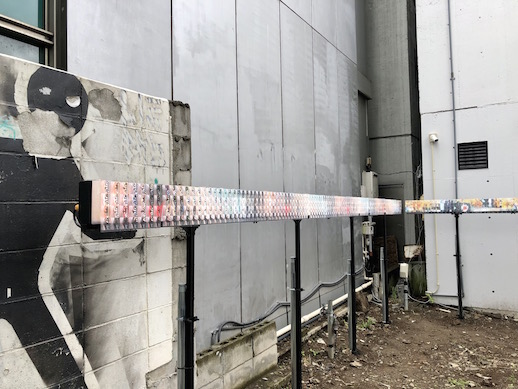
Across the street from Watari-um, Daito Manabe + Rhizomatiks’ “2020–2021” is installed in a vacant lot with the 2012 wall painting “Ikinokoru” (Survive) by Chim↑Pom. An obscured display screen flashes a running string of text and pictures, which were produced by internet searches using the word “Tokyo” from last spring’s State of Emergency until now. The AI-generated data relates to cancelled events and comments on news over the past year.
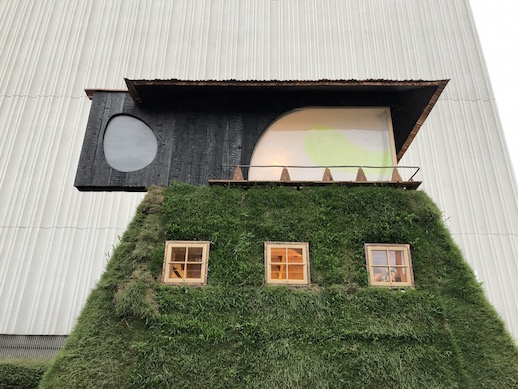
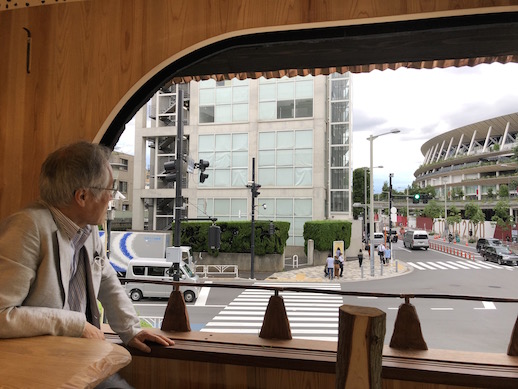
A short walk away stands Terunobu Fujimori’s “Tea House ‘Goan'” in front of the Victor Studio building and across the street from Japan National Stadium. Fujimoto chose this location for the contrast between the enormous sports arena and his modest tea house, a two-storied structure covered in grass on the outside. Enter through a hole in the front and ascend the stairs, and you’ll be rewarded with a pleasant view of the stadium from a cozy space equipped with the accoutrements for a traditional Japanese tea ceremony. Visits are limited to five people at a time for up to 30 minutes. Make same-day reservations at Watari-um.
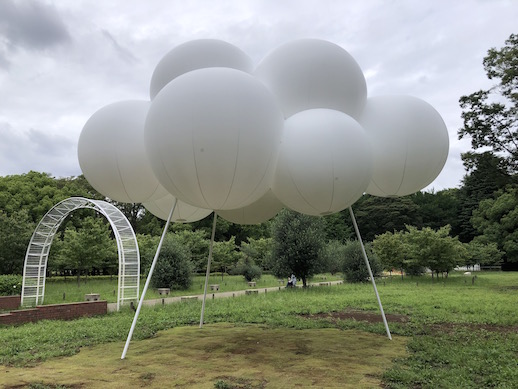
Sou Fujimoto’s “Cloud Pavilion” at Yoyogi Park behind Harajuku Station is one of two Pavilion Tokyo installations by the architect. (The other is at the Kuma Kengo-designed Takenawa Gateway Station on the Yamanote Line). The bulging white balloons are propped up in a grassy field against the backdrop of an expansive sky. Fujimoto was inspired by clouds because he sees them as “the ultimate architecture that envelopes all kinds of things…a big roof of the world.” With this in mind, he designed the pavilion as a place for everyone symbolizing diversity and tolerance.
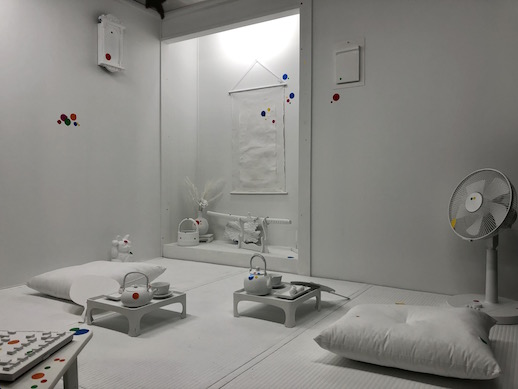
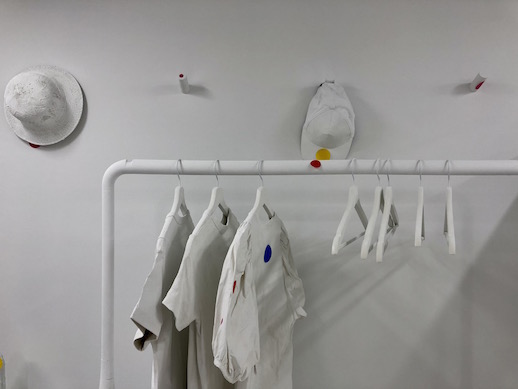
Yayoi Kusama’s latest installment in her series “The Obliteration Room” can be found in a nondescript Shibuya city office building. Like with the others, which start out as all-white spaces, visitors are given colorful stickers to decorate the premises. This Obliteration Room is unique in that it is actually a multiple-room unit, and it is the first to have a washitsu (Japanese-style room). Stop by to see how far everyone has gotten in “obliterating” the space with the stickers and leave your own mark on the dotted chamber. Reservations required.
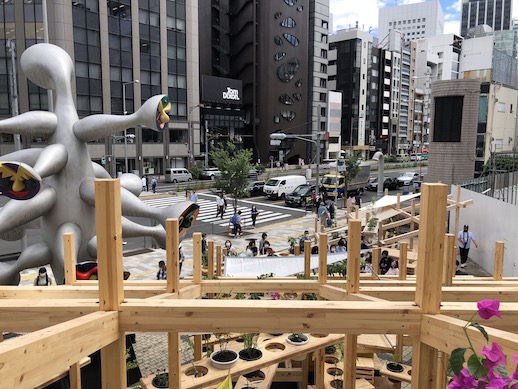
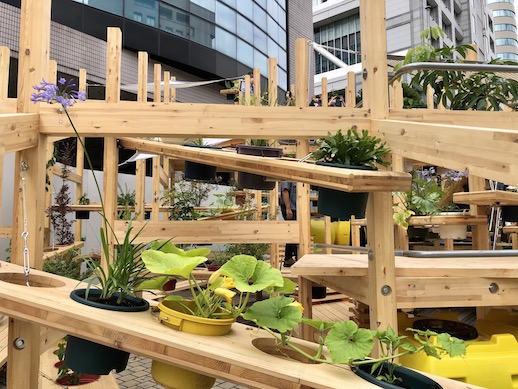
Teppei Fujiwara is an architect with an interest in the performing arts. It is fitting, then, that for his pavilion, he built a “Street Garden Theater” at the Former National Children’s Castle (Kodomo no Shiro) in Shibuya. This towering, sprawling wooden structure behind the Taro Okamoto sculpture “Kodomo no Ki” (Tree of Children) is an open grid of boards with planters containing aloe, morning glories, hibiscus, and other vegetation found along Tokyo roads. Ramps and platforms allow visitors to walk up inside this “stage” for greenery. To Fujiwara, the pavilion is “a continuous legacy of our relationship with the natural world.”
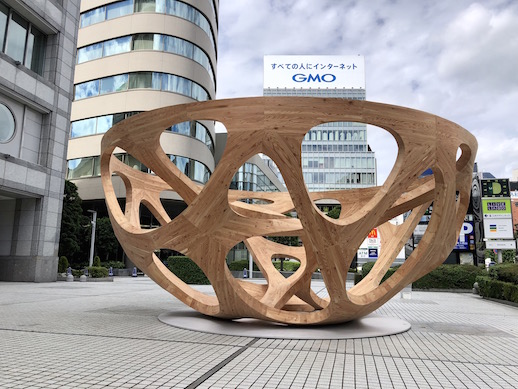
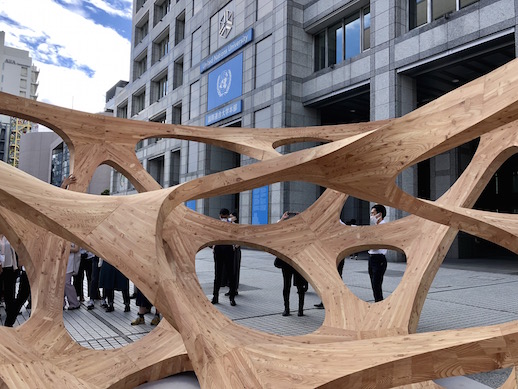
Akihisa Hirata also constructed a wooden pavilion. His “Global Bowl” on the plaza at United Nations University, just up the street from Kodomo no Shiro, is assembled from around 100 pieces of larch wood. You are invited to climb into, sit on, and even and slide down the smooth sides of this giant bowl with open spaces. The geometry of the structure “loosens and strengthens the boundaries between the inner and outer space at the same time,” forming a harmonious connection with the larger world.
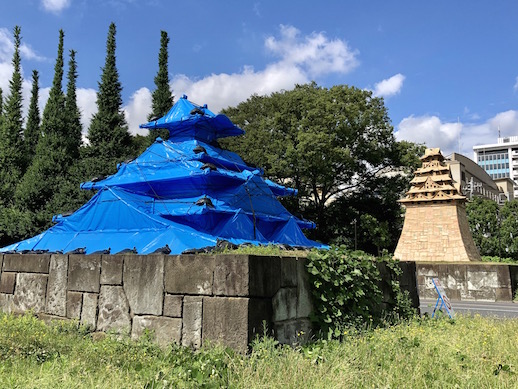
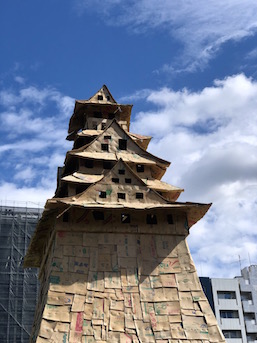
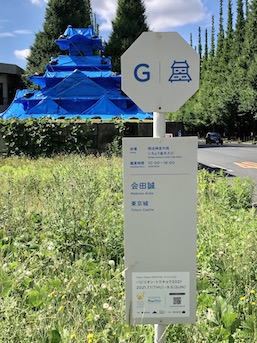
The ever-provocative artist Makoto has built two castles – one out of cardboard and one out of blue tarp – on the ginkgo-lined Meiji Jingu Gaien avenue. The materials he chose are commonly used for shelters by the homeless and after natural disasters. These structures installed on bases made from stone from the outer moat of Edo Castle are symbols of solidarity with people impacted by both. “What I want to emphasize is the opposite of permanence,” Aida explains.
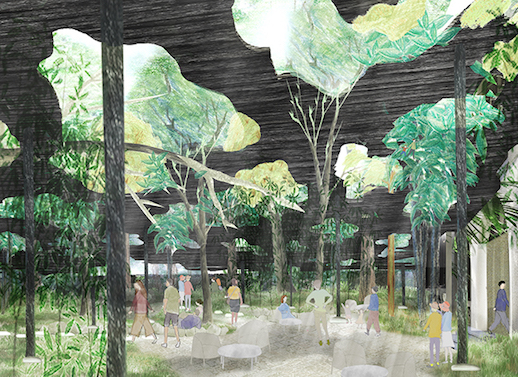
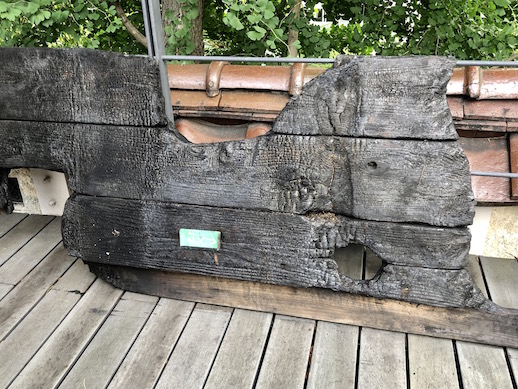
Kudan House in Chiyoda Ward is a former residence built in 1927 that has been converted into a space for creatives. For his pavilion “Kokage-gumo,” meaning “Tree Shadow Cloud,” architect Junya Ishigami has built a garden canopy from 80 large pieces of yagisugi charred cedar. Stroll through the tree-filled yard and enjoy the light streaming in through the holes in the wood. Open 10:00–18:00. Please check the schedule before going.
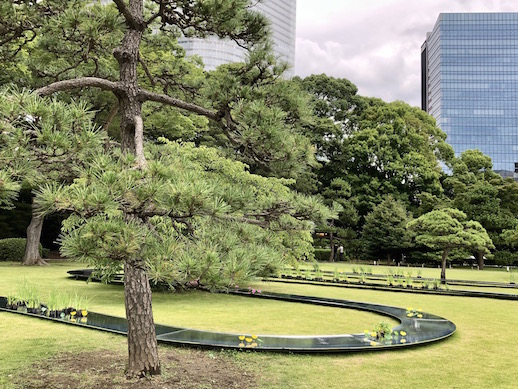
Kazuyo Sejima is an architectural superstar whose projects include the 21st Century Museum of Contemporary Art, Kanazawa. At the tranquil Hama-rikyu Gardens surrounded by Tokyo’s skyscraper-studded business district, she has designed an elevated stream called “Suimei” (Clear Water) in homage to a similar ancient Japanese landscaping practice. The stream is dotted with artificial flowers and grasses and winds around the garden’s trees. The flowing water alludes to the continuity of life in the past, present, and future.
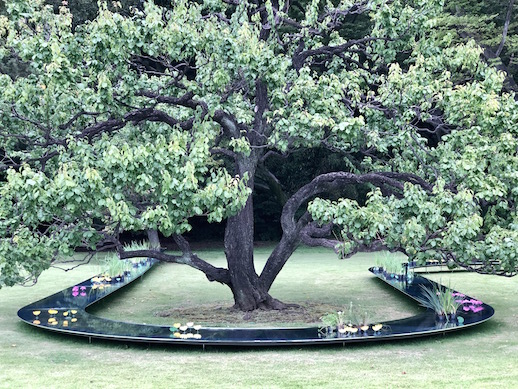
All of the Pavilion Tokyo 2021 structures will be ultimately be deconstructed or moved, so be sure to check them out before the festival ends on September 5th. Organizer Etsuko Watari explained during the press tour that while the pavilions “serve no practical purpose,” they are meant to give people something to remember this summer.
Please see the Tokyo Art Beat links for location specifics.



